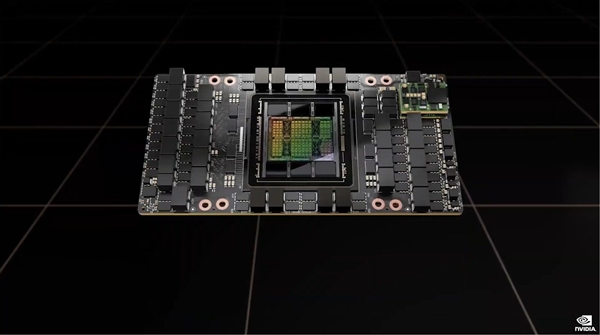
News on July 5, it is understood that NVIDIA’s artificial intelligence graphics cards continue to be popular in the market due to their powerful performance, especially the high-end products A100 and H100 graphics cards. However, with the sharp increase in market demand, the problem of insufficient supply has gradually emerged.
According to the latest news, NVIDIA is actively taking measures to solve the supply bottleneck problem, including working with external partners to increase production capacity. Currently, NVIDIA has cooperated with UMC, which will provide NVIDIA with Cowos interposer production capacity of 3,000 wafers to cope with the growth in demand. At the same time, another major packaging manufacturer, Amkor Packaging, has also joined the cooperation. The cooperation between these three parties will increase the overall production capacity of A100 and H100 graphics cards by 30%.

Previously, NVIDIA’s high-end GPUs were manufactured using TSMC’s 7nm and 5nm processes. However, the production bottleneck was not in the advanced process, but in the Cowos advanced packaging used. superior. Previously, NVIDIA relied on TSMC, but due to TSMC's limited production capacity and competition for orders from companies such as AMD, NVIDIA began to seek support from other partners.
The spread of this news has made the market expect the supply situation of A100 and H100 graphics cards to ease. With the increase in production capacity, problems such as price increases and panic buying are expected to be solved in the second half of the year. H100 graphics card is based on GH100 The GPU core is manufactured using a customized TSMC 4nm process and has excellent performance. It integrates 18432 CUDA cores and 576 tensor cores, has 60MB L2 cache, and supports 6144-bit HBM High Bandwidth Memory and PCIe 5.0 interface. Compared with A100, H100 has three times improvement in FP64/FP32 computing performance, ten times improvement in FP16 computing performance, five times improvement in TF32 computing performance, and six times improvement in FP8 computing performance.
Although supply is expected to increase, demand for high-performance graphics cards will continue to increase as artificial intelligence continues to advance. Therefore, NVIDIA needs to continue to increase its efforts to increase production capacity to ensure that market demand is fully met to promote the development and application of artificial intelligence technology.
The above is the detailed content of NVIDIA is in short supply of high-end AI graphics cards, increasing production capacity by 30% to solve the crisis. For more information, please follow other related articles on the PHP Chinese website!
 How to solve unable to connect to nvidia
How to solve unable to connect to nvidia
 What are the anti-virus software?
What are the anti-virus software?
 ie shortcut cannot be deleted
ie shortcut cannot be deleted
 vivox100s parameter configuration details
vivox100s parameter configuration details
 How to solve the problem that cad cannot be copied to the clipboard
How to solve the problem that cad cannot be copied to the clipboard
 Commonly used database software
Commonly used database software
 What does ping mean?
What does ping mean?
 What are the requirements for Douyin live broadcast?
What are the requirements for Douyin live broadcast?




